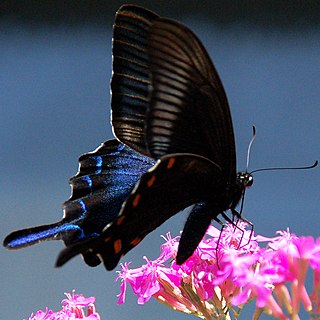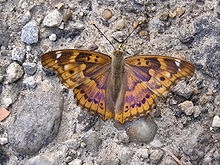An emperor is a type of monarch.

Apatura metis, the Freyer's purple emperor, is a species of butterfly found in the Palearctic.

Amphipyra is a genus of moths in the family Noctuidae, the only genus in the tribe Amphipyrini.

Euthalia is a genus of brush-footed butterflies. They are commonly called barons or dukes.

Chitoria is a genus of butterflies in the family Nymphalidae found in Southeast Asia.

Mimathyma is a genus of butterflies in the family Nymphalidae found in eastern and southern Asia. The genus was erected by Frederic Moore in 1896.

Sephisa is a genus of butterflies in the family Nymphalidae. It is related to Apatura, Hestinalis, and Mimathyma, with a common ancestor that diverged around 30Ma.

Tajuria is an Indomalayan genus of butterflies in the family Lycaenidae.

Amphipoea is a genus of moths of the family Noctuidae, found in the Holarctic realm.

Condica is a genus of moths of the family Noctuidae. The genus was erected by Francis Walker in 1856.

Sarbanissa is a genus of moths of the family Noctuidae. The genus was erected by Francis Walker in 1875.

Achillides, the peacock swallowtails, are a subgenus within the genus Papilio containing 25 species.












